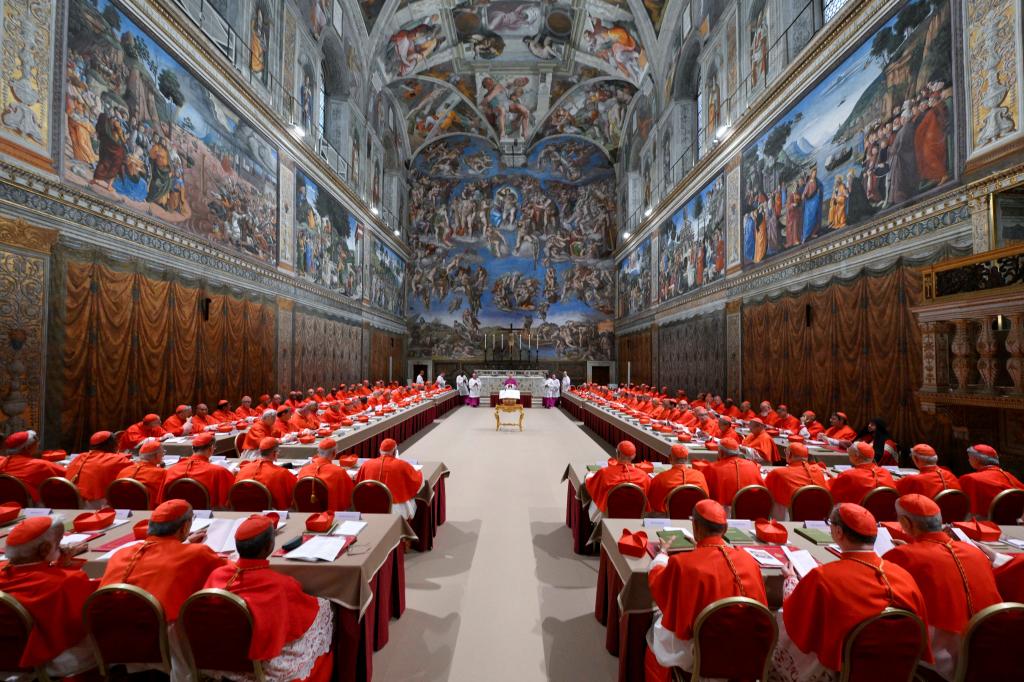The Catholic cardinals meeting for the conclave are locked in the Sistine Chapel — one of the most grand buildings in the western world. But their meals are decidedly less elegant.
The food at the cafeteria in Casa Santa Marta consists of little more than simple spaghetti, boiled vegetables, minestrone soup and lamb skewers for the duration of the secret ritual, according to the BBC.
“Food you could eat at a train station,” groused Cardinal Mauro Piacenza — who is from the part of Italy where pesto originated, the New York Times reported.
Others described being served “watery sauce” and bland pastas at the cafeteria, which Pope Francis sought to ensure served simple food during his tenure.

“You don’t eat very well,” said Cardinal Gianfranco Ravasi, another Italian.
But the shroud of secrecy gripping the conclave extends far beyond locked doors, cellphone signal jammers and threats of excommunication — even the food has been closely regulated to ensure no messages from the outside world slip by.
So that means some foods were banned or carefully inspected at previous conclaves, including whole roast chicken, stuffed ravioli, pies or even rigatoni — all of which were deemed easy targets for clandestine communication.
All food will be prepared by nuns from Domus Sanctae Marthae — the dormitory where the cardinals sleep and live outside of their deliberations — who earlier this week joined the rest of the Vatican staff in pledging a vow of secrecy similar to the one the cardinals made to kick off the conclave.
The practice of secret-safe food dates back to a time when the papacy’s reach was far more intertwined with political dealings, and keeping an open line with the outside world during the secret proceedings could have dire consequences.
In 1274 — during the conclave that set the precedent for today’s secrecy — Pope Gregory X first laid down the rules around cardinals’ diets, which at times included a requirement for clear glasses only and close inspection of all napkins and waste.
Back then the rules were also intended to ease cardinals’ fears of poisoning during times of heightened political tensions, according to the BBC.

Food was also sometimes used as a tool to expedite the conclave process — with some extended sessions in the 1200s and 1300s scaling back rations as days dragged on without a decision.
And all preparations were closely watched by the Vatican’s guard, then checked over by more guards, before being finally passed into the conclave chambers through a rotating contraption in the wall.
The current conclave began Wednesday, and is expected to last a matter of days.
Recent deliberations have averaged about three days, and none in modern times have lasted longer than five.
In 2013, the conclave to elect the late Pope Francis’ lasted just two days.
